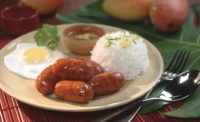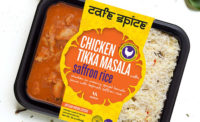Asian cuisine is gaining in popularity, but just what is Asian cuisine? There are many countries and cultures that are a part of the “Asian” category, and each one has their own flavor profile. It’s common for American food companies to put pineapples and teriyaki sauce on a product and call it “Asian-inspired,” but there are opportunities to get even more creative with products.
Day-Lee Foods, based in Santa Fe Springs, Calif., is a leading producer of Asian meals and appetizers, under several brands. The company recently expanded its sales and leadership team as a part of its strategic growth plans. Brian Kim, who recently joined the company as sales manager, foodservice and private brands, points to a growing trend toward Southeast Asian foods and flavors.
“Especially in mainstream restaurants of the U.S., you can see significant menu penetration of Japanese, Korean, Thai and Vietnamese cuisine. Southeast flavors are surely the trend to watch in 2019 and in the future,” he says.
Kim notes that the cuisines of the Southeast Asian cultures do share some similarities, but there are differences as well. He points to three of the most recognized types of Asian cuisines: Chinese, Japanese and Korean.
“In terms of cuisine, when we think of Chinese cuisine, we think of the orange chicken, beef & broccoli and chow mein (fried noodles). Chinese food can be on the savory, sweet and sour side. As for Japanese food, we tend to think of savory sushi and ramen, and for Korean, we think of fermented kimchi and Korean BBQ meats, which could be savory, sweet and spicy,” Kim says.
Other Asian cuisines include Thai, Vietnamese, Malaysian, Vietnamese, Burmese, Singaporean and more, he adds.
Chicken is typically the preferred protein choice, with pork being important as well. Beef, since prices are higher in Asia, is usually saved for special occasions.
Day-Lee Foods, in addition to its private label and foodservice sales, offers two retail brands. Crazy Cuizine offers a fusion of American and Asian flavors, such as the Chinese-inspired Mandarin Orange Chicken and the Korean BBQ Chicken.
Items produced under the Day-Lee Pride brand feature authentic flavors that you would find in Asia, and are related to Japanese cuisine.
“For example, Pork Gyoza and Chicken Gyoza are common appetizers found in Japan,” Kim says. “Additionally, our Chicken Karaage dish includes dark meat, which is the preferred chicken option of Asia and is seasoned with Japanese flavors.”
As with many manufacturers of foreign meals, Day-Lee has to some educating with its marketing. Most American consumers have a good understanding of Asian food in general and the differences between Asian and non-Asian food. However, understanding the differences between food types and flavor profiles requires a little more understanding. For instance, pork gyozas can be found in both Chinese and Korean cuisine, but they are not the same product. They are called “potstickers” in Chinese cuisine and have a thicker dough wrapper. The filling includes pork, leek and ginger, among other flavors. Korean gyozas are better known as “dumplings,” and have a thinner dough, and the filling seasonings can include pork, tofu, garlic and onion.
“Even though the pork protein remains the same, the ingredients in the filling differ, and result in a completely different flavor profile,” Kim says. “The same could be said for Japanese pork gyoza. Each Asian culture has unique ingredients and flavors that match the palettes of their respective people.”






Report Abusive Comment